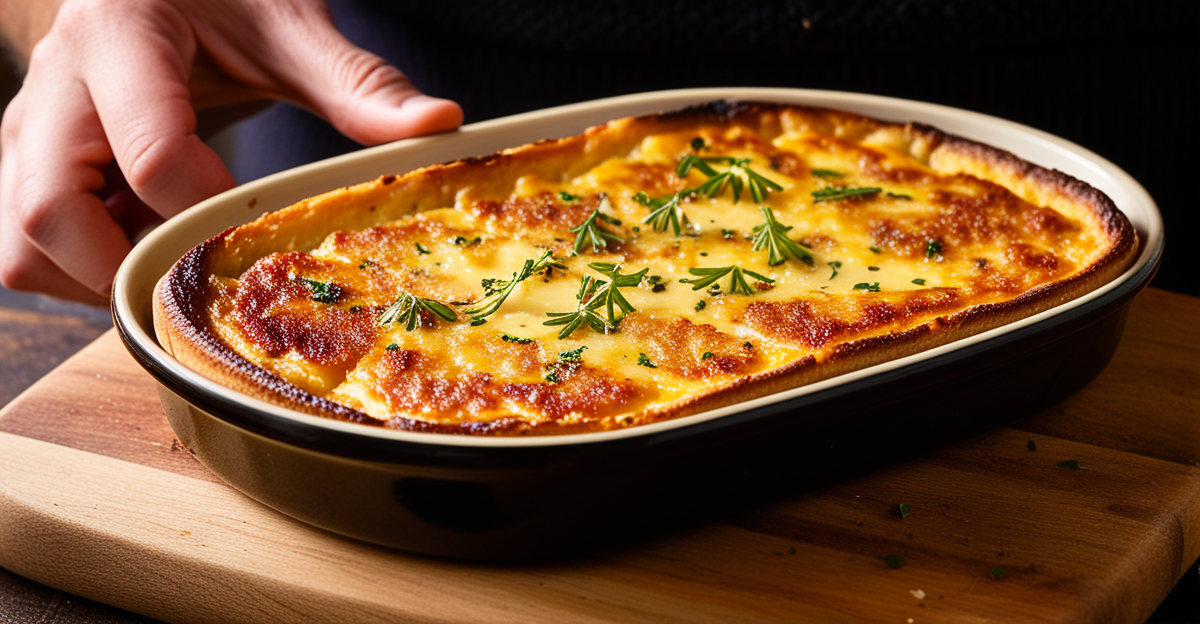Fundamental Techniques for Making Welsh Rarebit
Crafting authentic Welsh rarebit hinges on mastering key techniques that guarantee the perfect blend of flavors and textures. Firstly, selecting the right bread and cheese is essential. Traditionally, thick slices of hearty white or wholemeal bread serve as an ideal base, their firm texture holding up well under the rich cheese sauce. Cheddar cheese, known for its sharpness and meltability, remains the cornerstone in most Welsh rarebit techniques.
Achieving the ideal cheese sauce consistency requires careful attention. The cheese should be melted gently with butter, flour, and a splash of ale or milk to form a smooth, velvety sauce. Overheating risks separation, so continuous stirring over moderate heat is crucial for a luxurious texture.
Also read : What are the best techniques for crafting a savory steak and kidney pie?
When assembling, the sauce is generously spread over toasted bread to balance moisture and crunch. The final step is brief broiling or grilling until the sauce bubbles and browns lightly. This toasting step locks in flavor and produces the enticing golden crust that distinguishes classic Welsh rarebit. Mastering these key steps for Welsh rarebit ensures each bite is rich, creamy, and satisfyingly savory.
Fundamental Techniques for Making Welsh Rarebit
Mastering Welsh rarebit techniques begins with selecting the right bread and cheese to create an authentic base. Opt for rustic, crusty bread like sourdough or a dense white loaf; these hold up well under the rich cheese sauce and provide the ideal texture contrast. For cheese, classic choices are sharp Cheddar or Red Leicester—these melt smoothly and offer depth of flavor essential to an authentic Welsh rarebit.
Also to read : How Can British Cuisine Influence Modern Cooking Trends Worldwide?
Achieving the ideal cheese sauce consistency is crucial. The sauce should be creamy yet thick enough to cling to the bread without sliding off. This involves carefully melting the cheese with ingredients like beer, mustard, and Worcestershire sauce while stirring constantly. Cooking over moderate heat prevents separation and ensures a smooth texture.
The key steps for Welsh rarebit assembly involve spreading the sauce generously on toasted bread and finishing under a grill or broiler to achieve a golden, bubbly crust. Toast first to prevent sogginess, then add the cheese mixture and grill briefly, watching closely to avoid burning. This technique balances a crispy top with a rich, velvety interior, hallmark traits of a perfect Welsh rarebit.
Essential Ingredients and Recommended Substitutions
Choosing the right Welsh rarebit ingredients is crucial for an authentic taste. The classic recipe calls for sharp Cheddar cheese, which imparts the signature tang and meltability necessary for the sauce. Traditional bread options include thick-cut white or wholemeal varieties, prized for their sturdy texture that holds up to the rich cheese topping without becoming soggy. Ale or beer is often added to the sauce to enhance flavor complexity, though milk is a common substitute for a milder taste.
If Cheddar cheese isn’t available, alternatives such as Red Leicester or a mild English farmhouse cheese can work well, lending different but complementary flavors. For bread, sourdough or crusty farmhouse loaves are satisfying choices that maintain the integrity of the rarebit. When ale isn’t accessible, use a light lager or even plain milk to ensure the sauce’s creamy consistency.
Sourcing these ingredients from reputable suppliers or artisanal cheesemakers can elevate the dish’s quality, meeting the expectations set by traditional Welsh rarebit techniques. Selecting authentic ingredients remains one of the key steps for Welsh rarebit, tying together texture and flavor in ways that honor the dish’s heritage while allowing flexibility for personal taste.
Fundamental Techniques for Making Welsh Rarebit
Mastering Welsh rarebit techniques hinges on precise execution of several key steps for Welsh rarebit. Selecting the right bread and cheese forms the base of an authentic Welsh rarebit. Bread should be sturdy—sourdough, wholemeal, or dense white varieties hold up best, providing texture contrast without becoming soggy. Sharp cheeses like Cheddar or Red Leicester combine meltability with flavor depth, essential for authentic Welsh rarebit.
Achieving the ideal cheese sauce consistency is critical. Stirring cheese slowly over moderate heat with butter, flour, ale or milk, and mustard prevents separation, producing a smooth, creamy sauce that clings well to bread. The sauce should be thick enough to hold its shape but still luscious.
The assembly follows: toast the bread lightly first to avoid sogginess, then spread the cheese sauce generously. The final step is brief grilling or broiling until the sauce bubbles and turns golden brown. This step creates the hallmark golden crust of authentic Welsh rarebit, balancing creaminess inside with a satisfying crunchy top. Executing these Welsh rarebit techniques carefully ensures each bite delivers ideal texture and rich flavor.
Fundamental Techniques for Making Welsh Rarebit
Achieving an authentic Welsh rarebit depends on mastering precise Welsh rarebit techniques centered on ingredient selection and preparation. Start by choosing sturdy, crusty bread such as sourdough or farmhouse white; these types resist sogginess and provide the necessary texture contrast under the rich cheese topping. Classic sharp Cheddar is preferred for its bold flavor and smooth melting properties, essential for the sauce’s consistency.
Creating the cheese sauce requires controlled heat and constant stirring to prevent separation. Incorporate ingredients like ale, mustard, and Worcestershire sauce to enhance flavor depth while maintaining a creamy, thick texture that clings well. Overheating is the most common pitfall, so moderate heat and patience are key steps for Welsh rarebit success.
When assembling, spread the sauce generously over pre-toasted bread to preserve crispness. Finish by broiling briefly until the cheese bubbles and forms a golden crust. This final step seals in flavor and texture, hallmark traits of an expertly prepared Welsh rarebit. Following these key steps for Welsh rarebit ensures every bite delivers the classic balance of crisp, creamy, and savory elements.
Fundamental Techniques for Making Welsh Rarebit
Selecting the right bread and cheese forms the foundation for authentic Welsh rarebit. The preferred bread should be thick and sturdy—sourdough, wholemeal, or dense white bread—ensuring it holds the cheese sauce without sogginess. Sharp cheddar or Red Leicester cheeses are ideal for their meltability and bold flavour, crucial to authentic Welsh rarebit.
Achieving the perfect cheese sauce consistency is among the most important Welsh rarebit techniques. Slowly melting cheese with butter, flour, and ale or milk over moderate heat prevents separation and yields a smooth, creamy sauce that clings well to the bread. The sauce should be thick enough to maintain shape but velvety enough to coat evenly.
The key steps for Welsh rarebit assembly include lightly toasting the bread first to keep it firm, then spreading a generous layer of cheese sauce. A brief grilling or broiling follows, allowing the cheese sauce to bubble and brown, forming the signature golden crust. This final step balances creaminess with a crisp surface, showcasing the hallmarks of traditional Welsh rarebit. Mastery of these techniques is essential for consistent, delicious results.
Fundamental Techniques for Making Welsh Rarebit
Selecting appropriate bread and cheese is crucial in Welsh rarebit techniques to ensure an authentic Welsh rarebit. Opt for thick, crusty bread like sourdough or wholemeal, which resists sogginess and supports the rich sauce. Sharp Cheddar remains the preferred cheese for its meltability and flavor depth, fulfilling one of the key steps for Welsh rarebit.
Creating the cheese sauce demands precise temperature control. The cheese should melt gradually with butter, flour, and ale or milk, stirring steadily over moderate heat to achieve a smooth, creamy consistency. Avoid overheating, as this causes separation—an issue that ruins texture and flavor. This careful approach forms the foundation of the sauce’s signature velvety texture.
When assembling, toast the bread just enough to provide a sturdy base. Spread the sauce generously, ensuring full coverage without oversaturating. The final step is brief grilling or broiling, which browns the sauce to a golden crust, locking in flavor and texture. This combination of Welsh rarebit techniques results in a perfect contrast between creamy sauce and crisp topping—the hallmark of an authentic Welsh rarebit.
Fundamental Techniques for Making Welsh Rarebit
Mastering Welsh rarebit techniques requires precise attention to several critical components. First, selecting the appropriate bread and cheese is foundational for creating an authentic Welsh rarebit. Thick, sturdy bread varieties like sourdough or wholemeal are preferred because they resist sogginess and provide essential texture contrast. Sharp cheddar cheese, known for its meltability and bold flavor, remains the quintessential choice, ensuring the sauce clings smoothly and tastes rich.
Achieving the ideal cheese sauce consistency is a key step for Welsh rarebit. The cheese should be melted slowly with butter, flour, and a liquid such as ale or milk over moderate heat. Constant stirring is vital to prevent separation, resulting in a glossy, thick sauce that will hold its shape when spread. Avoiding high heat ensures the sauce does not curdle or become greasy.
When assembling, lightly toasting the bread before adding the cheese sauce is crucial. This preserves the bread’s firmness and prevents sogginess. Spreading the sauce generously followed by brief broiling creates a bubbly, golden crust that balances creaminess with a crisp top. These fundamental Welsh rarebit techniques guarantee a perfectly textured and flavorful dish every time.
Fundamental Techniques for Making Welsh Rarebit
An authentic Welsh rarebit begins by selecting bread and cheese that provide the perfect foundation. Choose thick, crusty bread—such as sourdough or wholemeal—that resists sogginess and supports the rich cheese sauce. Sharp Cheddar or Red Leicester cheeses are the best options, prized for their meltability and bold flavor that are essential in Welsh rarebit techniques.
Achieving the ideal cheese sauce consistency is one of the most important key steps for Welsh rarebit. Melt cheese slowly with butter, flour, ale or milk, and mustard over moderate heat. Stir continuously to prevent separation, ensuring a smooth, creamy sauce that clings evenly to the bread without sliding off or becoming greasy. Avoid high heat to keep the sauce glossy and thick.
Assembly involves lightly toasting the bread first, preserving its firmness and avoiding sogginess. Spread the cheese sauce generously over the warm toast, then finish by brief broiling or grilling until the sauce bubbles and the top turns golden brown. This final step creates the classic crust that balances a creamy interior with crisp texture—a hallmark of authentic Welsh rarebit. Mastering these Welsh rarebit techniques ensures consistently delicious results every time.











